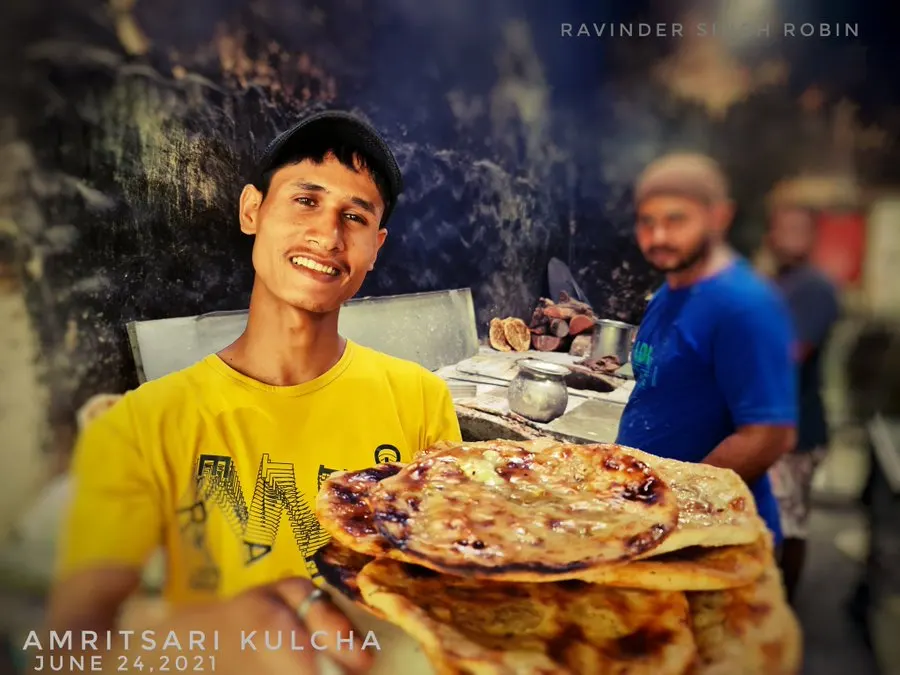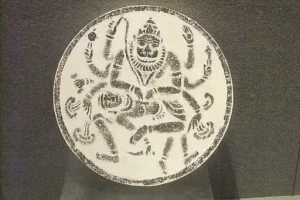Some of the most famous street foods of Delhi and Mumbai today, whether it is the Bombay chaat or tandoori bites, arrived in India post partition with refugees recreating foods they had known in their old homes, now across the border, in new cities as they struggled to build lives from scratch.
The bhatura arrived in Delhi in this way. Some refugees, struggling to find work in the new city, started hawking chole bhature as quick, wholesome breakfasts. Delhi had hitherto been used to the poori (or bedmi) with aloo halwa.
The bhatura, fried and fluffy, made with the refined maida, not atta, with the addition of soda bi carbonate for leavening was different from the poori of Delhi and UP, and possibly known only in undivided Punjab till then. But, post- Independence, as the popularity of the fluffy bread soared, it got incorporated firmly within Delhi’s dining culture. Today, virtually everyone in the city has his or her favourite chole bhatura place. In 2020, as people remained at home due to the pandemic, one of the most missed – and then cooked at home – dishes in Delhi was chole bhature with home cooks now contending to make this combo with as much dexterity as halwais at Nagpal or Sita Ram Diwan Chand or Kwality.
Missing this Nagpal k Chole Bhature and Lassi
#streetfiod #cholebhature #lassi #amarcolony #lajpatnagar #foodphotography #onepluse #onplusephotography pic.twitter.com/4VA0uGRCj2
— Salim Mohammad (@alishalim) May 30, 2020
But the story of the bhatura’s rise as a marker of pop food culture is full of surprising global and local connections too. A cousin of the kulcha, the other leavened bread of northern India that became widely popular by the late Mughal era, the bhatura seems most likely to have been concocted by Punjab’s agrarian households as a tweak to the poori.
The finely milled maida flour without bran had got popular in India by the late 18th century, and just like the kulcha was an improvisation of the naan, the bhatura, according to anecdotal accounts, came about as a puri twist, with the maida dough kneaded using water in which the kabuli chana/chole had been soaked overnight, thus adding a natural yeast to the dough.
Kulcha, meanwhile, seems to have been following its own independent trajectory till then, even as the Mughal empire started its long period of decline. A maida dough would be left by the embers of the kitchen fire or oven to give a version of the sourdough, or khameeri dough. A lighter dough could thus be baked not just in the brick bhattis (kilns) used by Mughal bread makers of the day, but even on hot iron tawas. In fact, kulchas could even be fried initially, rendering them close to the origin of the bhatura.
Back to the bhatura. The bhatura is not a stuffed bread today, unlike certain kulchas, notably from Amritsar. But old timers in Punjab recall bhaturas also being stuffed with spiced mash of potatoes or paneer, quite in the manner of the Amritsari kulchas.
Meanwhile, plain kulchas had got popular in Mughal Delhi by the late 18th century. The pillowy, stretchy and softer alternative to the naan had become the common man’s breakfast dish, to be eaten with white peas (matar in Delhi and Lucknow), with meat dishes such as nihari in both Lucknow and Hyderabad (where the Nizam’s emblem became the kulcha), and even with just tea as a sort of a biscuit like confection in the poorer parts of Bihar eventually.
But it was in the undivided Punjab of Maharaja Ranjit Singh, who ruled northwest India in the early half of the 19th century from Lahore, that the stuffed, ghee lashed kulchas that we recognise as a work of art or craft, the “Amritsari” kulcha, seem to have emerged.
Maharaja Ranjit Singh by French artist Alfred de Dreux, 1830s. Reportedly commissioned by Gen Ventura & presented by him to King Louis-Philippe in 1838. Work with Louvre. #Art #History #Punjab #Sikh @ssharadmohhan @Peachtreespeaks @gsmgoraya @PunjabiRooh @DalrympleWill @JasKand pic.twitter.com/qudZ6koZaR
— Hemant (@hemantsarin) August 20, 2022
Could the idea of the stuffed leavened bhatura, an allied maida bread, similar to the poori or kachori, have prompted cooks to stuff the kulcha with spices, paneer and potatoes? There are debates we can never conclusively resolve.
At any rate, the Amritsari kulcha, which is pretty unlike its other northern Indian or Hyderabadi counterparts, because of the way in which the pastry is layered and filled, borrows the idea of stuffing from both the parantha and poori-kachori tradition of northern India.
What helped the cult of the kulcha spread undoubtedly was the invention of soda bi carb and its use by bakers all over the world in the late 18th-early 19th century.
In 1790, Nicolas Leblanc, a French chemist, made soda ash (or soda bi carbonate) from common salt. By the beginning of the 19th century, bakers in Europe and America were using this new and convenient leavening agent for their bakery. And it seems to have arrived in India too, on the back of European influence in courts of Avadh and Hyderabad as also Maharaja Ranjit Singh’s cosmopolitan cities. The kulcha could now easily be leavened, unlike the naan, where a sourdough starter or yeast is still used.
French chemist Nicolas LeBlanc was born on December 6, 1742. He devised in about 1790 of a process for manufacturing soda ash from brine (a form of salt), which transformed soapmaking from a handicraft to an industry. https://t.co/BFmqk7Vd29 pic.twitter.com/pF3uqV9c6T
— Trivia Encyclopedia (@edpearce080759) December 6, 2021
Now, comes the twist in the tale. Did the idea of the stuffed kulcha, which itself came from the idea of a stuffed poori or bhatura, travel further west beyond the Subcontinent? We do know that by the 18th century, the kulcha was a common man’s travel companion from stories of the bread tied up in cloth bundles.
Did the stuffed kulcha by some strange quirk of fate make its way to distant Georgia? It’s not as farfetched as it would seem.
Georgia’s national dish the khachapuri, now trending in global food circles, as an alternative to the pizza or the Turkish pide, in fact, may have Indian origins, as its name suggests: khacha, meaning cheese, puri meaning bread, referencing perhaps an Indian connection.
The khachapuri in its essence is a cheese filled bread, and though there are many regional variations, its most basic version seems remarkably close to the Dogra version of the kulcha filled with the local kalari cheese in Jammu, not to mention paneer, in Amritsar.
The way to make a khachapuri dough is also pretty similar to that of a kulcha, using either soda bi carb, or yeast plus yoghurt, milk et al. The puri can be either baked or less commonly even fried after boiling, as a recipe dating back to 1909 suggests. The last would make it similar to various dumplings in Asia and Europe. But at its most common, the khachapuri is a flatbread, pretty much like our own kulcha.
India’s ties with Georgia, and the region around the Caucasus of course, date back to ancient times, and folktales from the region bear references to the Panchatantra. In Mughal times, Georgian slaves and traders were part of the medieval courtly world, including possibly Udaipuri Begum, Aurangzeb’s loyal companion. The country itself struggled to keep independent from Turkish and Iranian influences, till it was annexed by the Russian empire in the 19th century. About a decade ago, Sikh farmers who had bought cheap agricultural land in the kingdom became news highlights, tilling a land for wheat so far from home.
As the European press wondered about how they’d cope, at least the bread may have been reminiscent of their own homes.
Also Read: From Armenia to Amritsar, Aam Papad’s incredible travels
(Anoothi Vishal is the author of Mrs LC's Table. She is also a columnist and food writer, specialising in cuisine history)




















